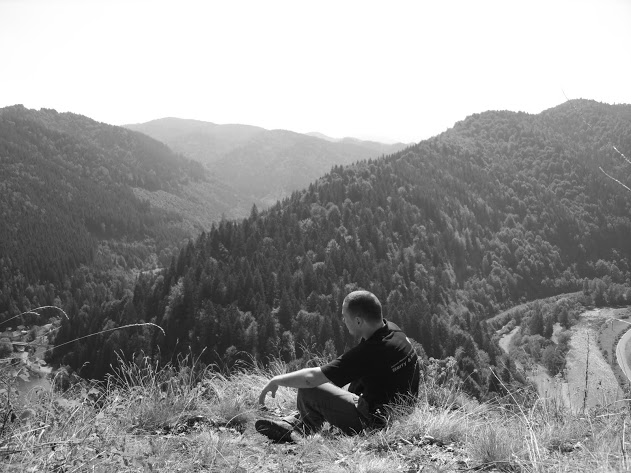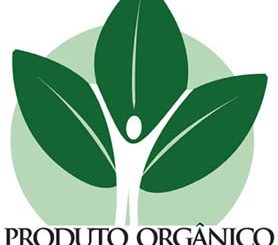
Written by Attila Szocs, Land Rights Campaigner at Eco Ruralis
The world just passed from the Year of Family Farming (2014) and entered in the Year of Soils (2015). Both are equally important for the future of our food systems and for a sustainable management of our natural resources. With its millions of small and diverse farms, Romanian peasant farming is in the spotlight for both these years. Historically, peasants were not just the owners of the countries’ fertile soils, but most importantly, the good stewards of these lands. Defined by their size (an average of 2.5 ha), strong cultural ties with the land and their agro-ecological approach, peasants were the basis of the Romanian food production chain while also making sure to safeguard the natural legacy for future small family farmers to come.
There was at least one distinctive social factor of the Romanian peasant landscape: being a neighbour meant more than owning the land near you, it almost meant “family”. It involved assistance with labour intensive agricultural activities, taking care of each other’s animals, being a friend in need. Peasant communities were built up on inter-dependency, and being a “good neighbour” was a prerequisite of peasantry. In general, land ownership was in a balance, understanding that a landless member of the community became more dependent on the neighbours, might that be the village, or the state. Politically speaking, it was more about the human right to land, rather than today’s market-based orientation. And it worked.
After the post-communist era (which had a great deteriorating impact on peasant communities, due to the collectivization process) the free-market approach towards land (coupled with a faulty land re-distribution process) generated an obvious change on the farming landscape. New neighbours have arrived. Multinational banks, investment funds, insurance companies, international private investors and domestic new-born oligarchs all entered in the rush for land. Many of them suddenly became institutional neighbours of peasant communities.
As a Land Rights Campaigner at Eco Ruralis, I very often find myself in the rural landscape, discussing with peasants topics such as land ownership and stewardship related matters. The duality of the Romanian agriculture landscape is best represented by their answers. In most of the cases (especially from the southern plains of Romania), they no longer know their farming neighbours. They reply that the land is owned by “some Italians” or “a foreign company”. In the best case scenario, they point out the farm manager, or direct me to the mayor. So who are the new mysterious neighbours? And most important, how do they integrate in the Romanian agricultural landscape?
1. Financial institutions (Multinational banks, investment, pension or other equity funds):
Mostly buying very large tracts of land (ranging from 3000 ha to 40000 ha) for speculative purposes, international banks or investment funds usually register subsidiaries in Romania under which they start land acquisitions and concentration of small – using the industrial term “economically unfeasible”- plots. Speculating on the land price increase, the consolidated plots are planned to be sold 10 years after purchase. Usually the holders don’t engage in agricultural exploitations and lease the land to other companies (foreign or domestic agricultural companies). The whole process is nontransparent, and allegations of corruption abound. Leases are many times linked to local public officials (mayors, local deputies). Having first hand knowledge about local land ownership, these officials have more roles: firstly, they facilitate the land deals between the villagers and the company, only to take lease of the lands themselves, after the company (thus, the bank) gets full ownership. It is one of the most vicious circles of land grabbing, generating very large scale land concentration into very few corporate hands.
Rabobank, the Dutch based banking institution, which currently holds tens of thousand of agricultural lands in the South-East of Romania, through its Romanian subsidiary. Most lands are leased back to domestic agricultural companies (many of them run by local mayors). In the land concentration process, villages and their drastically decreasing inhabitants, became islands surrounded by mono-cultures and export oriented industry.
They are not the only ones: The Romanian countryside has become a playground for funds managed by numerous companies like: Spearhead International (UK), Agriinvest or Jantzen Development (Denmark), or Germanagrar (Germany).
2. Multinational companies with foreign capital:
This category includes multinational companies especially from Western Europe (but not only) attracted by the land investment opportunities presented by Romania. Usually Romania is not the only destination of these companies, many of them also investing in African or South-American countries. Their approach can vary – either investing all their destined capital into land acquisitions (and then leasing/selling to third party companies), or leasing the bulk of the lands and direct their capital into agro-industrial development and exploitation (mechanization, agro-chemical inputs). The latter category is mostly export oriented. Land ownership for these investors can vary from a few thousand hectares to approx. 40000 hectares.
Some examples include: Nutre (Portugal), Fri-El International Holding (Italy), Bardeau Holding (Austria), Maria Group (Lebanon), Ingleby (Denmark).
3. Private investors from abroad: Usually investors from this category represent natural persons from other EU or non-EU countries who invest their capital into Romania, registering a company in the country, under which they buy/lease land. Many of the companies also develop vertically, having businesses also in other chains of the food system besides production and are very export oriented. The investment patterns are mostly the same as for the above mentioned category, but usually these actors own less land (200 – 4000 ha).
4. Domestic private investors and companies: Using the post-communist blur over land ownership and the lack of a Governmental vision from the early 1990s these actors were the first ones to access large tracts of land. Acquisitions include large ex-communist farms and communal lands and involve several notorious Romanian oligarchs. Several cases of the largest agricultural land concentrations can be listed here.
Examples: InterAgro Holding (55 thousand hectares), Racova Group (more than 40 thousand hectares), TCE 3Brazi (more than 70 thousand hectares, largest farm exploitation in EU).
5. Multinational companies trading agricultural commodities (international traders): Highly export oriented companies usually controlling lands through contract farming and working with all the above mentioned actors. Having most of the agricultural storage facilities they also have a critical influence and control over commodity prices in Romania. Examples: Cargill (20 industrial silos), Bunge (joint venture with Nutre in biodiesel plants), Brise Group (farming and storage holding, Romanian ownership, wanting also to enter in Bulgaria and Serbia).
From land concentration to corporate control:
Romania has approx. 14.7 million hectares of agricultural land, including arable, pastures and meadows. 9 million hectares of this represents arable lands. It is estimated that approx. 1 million hectares of this land is owned/leased by foreign capital. We can also add to this several hundreds of thousand of hectares owned by domestic companies. It has to be noted that these estimations are being based on public information regarding subsidy distributions and research done by civil society or real estate companies and the media. There is no official recognition on the dimension of land grabbing in Romania.
Now let’s look this from a peasant perspective. As the above mentioned ‘neighbours’ use the lands merely as a production interface mostly for export markets, land grabbed areas chronically suffer from a lack of an alternative socio-economic development, they become mono-industrialized, depleted and poor. Lack of transparency is also a huge concern: deals are often done using the power positions of the corporate and state, local communities are kept in the dark regarding the economic and environmental transformations they will have to endure.
Definitely, there is a demand for more transparency and much more. As peasants from one visited south-eastern village put “We do want to know more about what companies control the lands around us, but most importantly, we want a say about who controls the access to land in our area”. With Eco Ruralis we want to take their voice further, and see their human right to land the only way to create balance in the Romanian farming neighbourhood.
More from Attila Szocs
- Grown men working 12 hours a day for a loaf of bread
- Romanian alternative food networks: growing through the cracks
- Victory for Romanian peasants over gold mining corporation
- Food Sovereignty: an idea whose time has come.
- Public Land Agencies: French SAFER model safe for Romania?
- Elections 2014 in Romania
- New open source database uncovers land grabbers
- Organic Participatory Guarantee Systems – a Brazilian model.
- Let there be biodiversity! The importance of sharing free seeds
- FAO Voluntary Guidelines – hope for responsible land tenure policies
- Food losses and waste on the FAO agenda in Bucharest
- Organic vs. Conventional agriculture – where’s the profit?
- FAO Conference: peasant rights on the table!
- Ukraine’s land struggle with Russia
- The irony of national markets: cheap exports expensive imports
- Bureaucracy hampering CAP funds absorption in Romania
- Of Fairy Orchards, Biodiversity & Octogenarian Wisdom
- Illegal GM soy discovered in Romania, claim Greenpeace.
- Eastern Europe against TTIP Trojan Horse
- Return of the Roman General: Land Grabbing in Western Romania
- Corporate control of EU cereal seed supply: the facts from Romania
- A new, more flexible alternative food network model
- Romanian peasants’ civil disobedience regains market access
- Climate Smart Agriculture: a climate change fairytale
- Billions Spent on Rural Romania – who benefits?
- Summer festivals celebrate rural activism in Romania
- Agritourism’s Expansion into Romania: Food, Fun & Knowledge
- Tough Times for Eastern European migrant workers
- Moldova: East or West, Capitalism Defines its Socio-Economic Terrain
- Will Dacian Cioloş remain as Agriculture Commissioner?





